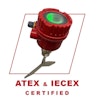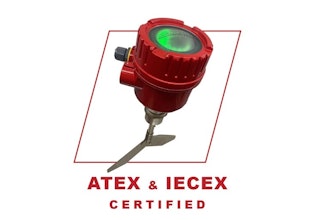The U.S. Food and Drug Administration (FDA) is currently in the final stages of implementing a Unique Device Identifier (UDI) initiative. When this initiative is fully implemented, all medical devices will need to have a label containing Device Identifier (D.I.) and Production Identifier (P.I.) data. This mandate is aimed at improving patient care and product quality by creating the ability to trace information about each medical device throughout the supply chain.
Benefits of Unique Device Identification
According to the FDA, when fully implemented, the UDI system may:
- Allow more accurate reporting, reviewing and analyzing of adverse event reports so that problem devices can be identified and corrected more quickly.
- Reduce medical errors by enabling health care professionals and others to more rapidly and precisely identify a device and obtain important information concerning the characteristics of the device.
- Provide a standardized identifier that will allow manufacturers, distributors and healthcare facilities to more effectively manage medical device recalls.
- Provide a foundation for a global, secure distribution chain, helping to address counterfeiting and diversion and prepare for medical emergencies.
- Lead to the development of a medical device identification system that is recognized around the world
The UDI Challenge
The FDA UDI mandate was initiated to enable better traceability of medical devices throughout the supply chain and to improve the information available to manage product quality issues, which could potentially impact the patient. Other global health authorities are also enacting similar requirements with which multinational companies will have to comply.
UDI compliance requires a strategic solution that can support the two elements of the regulation for each shippable SKU:
1. Registration of the UDI “static” device identifier (D.I.) attributes (11 required + 36 additional) with the FDA GUDID (timeline: 12 months after final ruling for Class III, 24 months for Class II)
2. Ensure traceability of the UDI “dynamic” production identifier (P.I) attributes by internal company processes (i.e. lot history, serialization, expiration data)
FDA UDID Pilot
To assess the feasibility of collecting, storing and retrieving this UDI attribute data, the FDA sponsored a 6 week UDID pilot. Participants included 6 manufacturers and 5 hospitals. A total of 621 discrete devices were loaded into the GUDID database for review with the following results:
- All suppliers provided data for the 11 required UDI attributes
- Only a few provided additional information for the other 36 UDI attributes
- Suppliers were significantly challenged with locating information as it was not in centralized system and in some cases not even documented
- Surprisingly, regulatory attribute data such as Market Authorization Codes, FDA Product Codes, and Country of Origin information was hard for suppliers to source
- All suppliers indicated it would be very burdensome to add a method for collecting, storing and reporting this information to the FDA
The scope of this effort combined with the rapidly approaching deadline has made UDI compliance the #1 challenge in the medical device industry.
To address this challenge, companies need to assess the significant impact UDI requirements will have across all business functions of the organization. Organizations should not only define a UDI initiative tactically as a regulatory requirement but also take the opportunity to consider an enterprise strategy that efficiently achieves UDI compliance but also leverages the UDI foundation to enable enhanced business value as well.
Read Next























